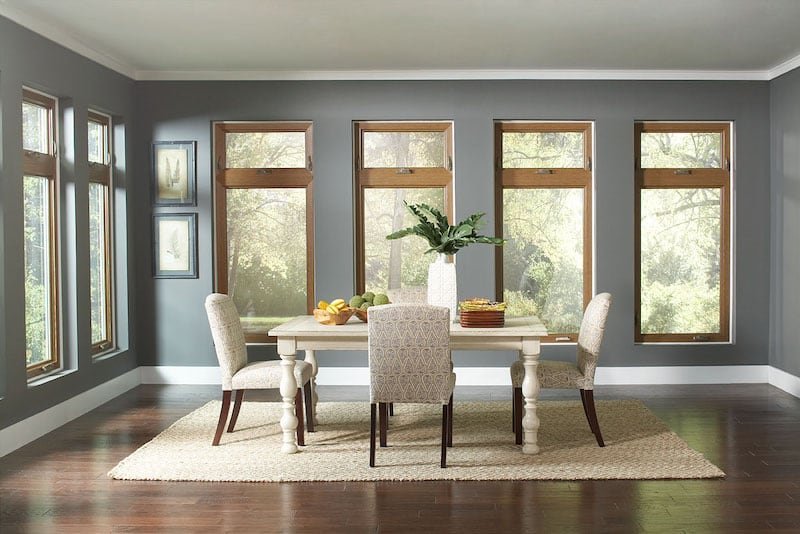
What Is A Casement Window?
A casement window is a type of window that opens outward in the top sash, fixed by hinges to the frame, and pivots on rollers at the side. Casement windows are typically found on buildings of height less than six meters. In contrast to more common inward opening windows such as double-hung or slider types, casement windows open outward for quicker ventilation and better light control. Casements can also be used with some other window replacement options, such as those used in French doors or sliding pocket doors. Other common names for casement windows in different places are “sash” or “wing” windows. Click the link here to connect with Maverick Windows, the leading window services provider around you.
The term casement comes from the French word ‘cassé’ which means broken into. The word ultimately originates from the Latin root cassus meaning ‘broken’. This is because the hinges would break if too much pressure was applied to open the window.
Why Window Casements Are Important
Casement windows provide a lot of benefits for those who choose them. They are an excellent choice for locations that require a lot of ventilation, such as kitchens and bathrooms because casement windows open inwards away from the room. These types of windows are also popular in garages or any other areas with machinery or high levels of humidity because they can be opened fully to provide ventilation without putting the contents at risk.
The windows use wooden bars that slide to provide the opening mechanism of the window. They have a positive locking system that is designed to be easily locked and unlocked to allow for easy access and a quick escape from the area if necessary. The higher the quality of casement windows, the longer they will last.
Casement Windows Come In A Variety Of Styles
These are the most common and durable casements with a wood frame that can be stained to match the rest of the exterior. The window opens outward on both sashes and has rollers at each side for easy opening and closing. Depending on the style, these windows may be replaced by oiled bronze or aluminum frames that are double glazed. The glass is tempered so even if there is an internal break, it will not shatter.
These windows are often seen in extension arms, angled out from the main structure. They can be manufactured to any size and shape and are usually double glazed. They’re popular with homeowners because they are easy to clean. This is because the sashes slide up or down within their frames. There is also a wide range of styles, materials, and colors that can enhance the look of any home.
Window Casement Design

Some casements are fitted with ferrules to compensate for movement of the sash joint as one sash rotates or slides over the other. In addition, some casement windows are made with more than two leaves. Such windows are sometimes called double-hung sashes and may be properly called “casements with two sashes”. The two leaves could be hinged on both sides, or one side only.
Typically, however, the opposite sashes are not hinged. In this use of the term “casement”, only a single leaf is attached to both sides of an appropriate pivot. Inner hinges permit windows to be opened outward at the top primarily for ventilation. However, some casements also offer security benefits by locking in place when closed and preventing intruders from entering the room when open.
Casement Windows Installation
When casement windows need to be installed or repaired, there are many things that need to be considered. The first thing to keep in mind is how the casement windows are to be secured into place. Because of their ease of locking mechanism, casement windows can only fit securely into a specific position if they are properly secured in place. If there is no existing window frame, the new casement windows can either be fitted into position or screwed directly into the outside wall of the room.
However, if there is an existing window frame that will be used for a casement window, then the casement window should be installed into the window frame after it has been removed from its previous installation. If the casement windows are being fitted into an existing frame, they can either be screwed into place or mortised in to fit better and more securely. While they are just as susceptible to damage from a construction project as double-hung, casements can be easily closed when the need arises.




